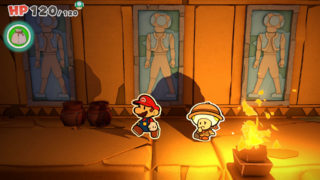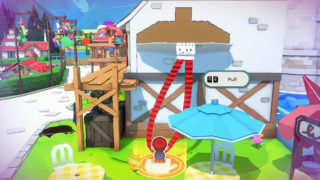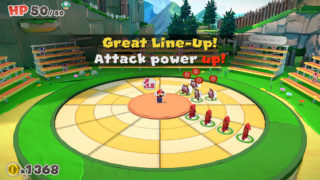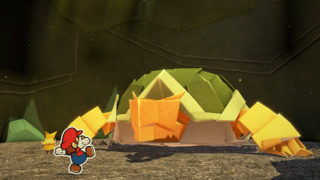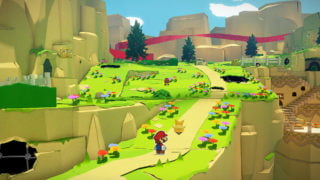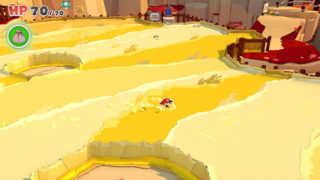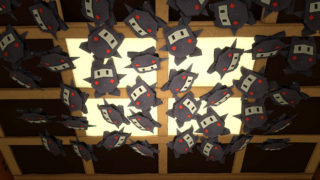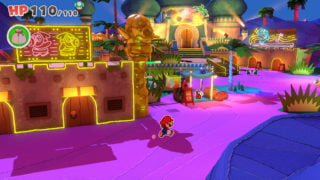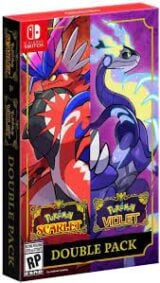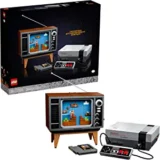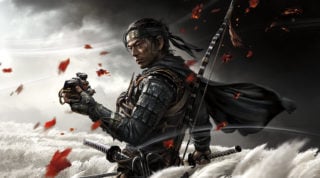Review: Paper Mario: The Origami King is a cute adventure with flat mechanics
The series’ latest light-RPG adventure has standout moments and familiar missteps
- Game director
- Masahiko Nagaya
- Key Credits
- Kensuke Tanabe (Producer), Risa Tabata (Assistant producer)

The Origami King is not the triumphant return to Paper Mario’s hardcore RPG roots that many fans have been craving. If anything, it more closely resembles the series’ divisive 3DS and Wii U instalments, with a stronger focus on action and accessibility than the stats and levelling screens that established the franchise.
But It’s also an overall better game than the deeply flawed Color Splash and Sticker Star, with a more refined and confident take on those games’ formula of light RPG gameplay meets comedy-adventure. The Origami King contains some of the series’ standout moments – almost all of them related to its enjoyable script and wonderful, varied environments – but it also frustrates with some disappointing new features and all-too-familiar missteps.
The Switch game again takes place in an alternate and slightly surrealist Mushroom Kingdom, where every Goomba and Piranha Plant has a voice and spurts comedic one-liners liberally as you explore the papercraft world.
The story kicks off as our moustached hero discovers that Princess Peach, as well as evil King Bowser’s armies, have been abducted by a new villain from another universe – the one the game is named after – who’s transformed them into brain-washed origami zombies forced to do his bidding. When Peach’s castle is uprooted and wrapped in magical paper streamers, it’s up to Mario and friends to embark on a quest to unravel them one at a time.
The world and characters are clearly the star of Origami King: During his quest, Mario adventures across gorgeous land, mountain and sea worlds on an interconnected map, which players can travel through with far more freedom than in recent games.
Both the variety and imagination behind these environments is the Paper Mario series at its absolute creative best; in the opening hours, you’ll visit a commune of cultist Koopa Troopas, a theme park based on ancient Japan and a neon-clad city in the sand.
The adventure can be oddly paced at times with more than a few frustrating fetch quests and annoying puzzles, but it’s constantly surprising and the environments themselves are never dull. As you’d expect, the script is also consistently amusing, with liberal references to past Mario adventurers and smashing of the fourth wall. The back-and-forth is improved by the return of companion characters, some of whom develop in satisfying ways, but it’s disappointing they can’t be controlled in battle.
The game’s biggest addition is a revamp of the series’ battle system. In great news for critics of recent entries, stickers and battle cards are nowhere to be seen, and instead Origami King allows players to pick from a permanent roster of attacks in a turn-based system similar to the one we know and love from the early games.
“The adventure can be oddly paced at times with more than a few frustrating fetch quests and annoying puzzles, but it’s constantly surprising and the environments themselves are never dull.”
The twist comes in the form of the battle arenas themselves, which this time appear ring-shaped, and allow players to twist and shuffle them before battle like a sort of Rubik’s Cube dart board. Each battle starts with a group of baddies scattering themselves across the arena, and players are then given 30 seconds to attempt to reorganise them into strategic positions, before moving on to the attack phase.
Players can either rotate the rings or shuffle the various sections forwards or backwards. The objective is either to reorganise the baddies into a line – allowing Mario to chain-jump off their heads – or group them together for an effective Hammer smash. Successfully grouping enemies also boosts Mario’s attack power, which means you’re at even more of a disadvantage if you mess it up.
Strategically, the ring system feels like a step up on the other gimmicks recently featured in Paper Mario games. Because the number of arena tweaks players can make per turn are limited, players must think carefully about their moves, lest they end up with enemies in positions that are impossible to attack within their number of attack turns.

Battles are at their best during boss encounters, which add an extra layer of complexity to the ring system by flipping the entire setup and placing Mario on the outside of the arena and the boss in the centre. Players then must figure out how to position Mario to the enemy’s weak point by shuffling various arrows, switches and markers around the arena, before setting the plumber off like a dungaree-wearing Chu Chu Rocket to activate them.
Sadly, outside of these boss encounters, the ring system never significantly evolves in complexity, either in terms of the enemies you face or the attacks at your disposal. It’s here where the lightness of the game’s RPG elements, namely the removal of experience points and levelling, really do hurt its decision to stick with only part of the genre formula.
Just like recent Paper Mario instalments, very quickly there becomes little reason to engage in combat and we spent more than two thirds of The Origami King running away from pursuing critters because it simply wasn’t worth the effort.
“With its mechanics lacking in depth then, Origami King’s appeal lies squarely on the strength of its wonderful world and characters.”
Mario’s main reward for defeating enemies are coins, and while these can be spent at specific points in the story on useful gear upgrades, such as those which improve your guard ability or offer a longer time limit in battle, after a few hours you’ll likely have tens of thousands and never need to actively seek them out (unless you’re interested in gathering all of the game’s cosmetic collectables, that is.)
The Origami King’s other mechanical introductions also fall flat: The 1,000 Fold Arms feature, which allows Mario to reach out with giant limbs to interact with the game’s backgrounds, is limited in its use, as you can only perform it in specific spots.
Meanwhile, the Confetti mechanic feels like a reskin of the last game’s tiresome paint system, with players able to fill in gaps in the scenery by scattering said paper. Unfortunately, filling holes in the ground never feels particularly satisfying, especially as the reward for doing so is yet more coins.
With its mechanics lacking in depth then, Origami King’s appeal lies squarely on the strength of its wonderful world and characters. Thankfully, these are appealing enough to carry the game’s campaign for much of its 30-something hours, with constant surprise, invention and humour throughout the colourful adventure. However, those looking for something more than a whimsical story and colourful backdrop will likely see this as another instalment that falls flat.
The Origami King contains some of the series’ absolute standout moments – almost all of them related to its enjoyable script and wonderful, varied environments – but it also frustrates with some disappointing new features and all-too-familiar missteps.
- Wonderful, varied environments
- Enjoyable script and characters
- Battles and new mechanics lack depth
- Some frustrating pacing issues
